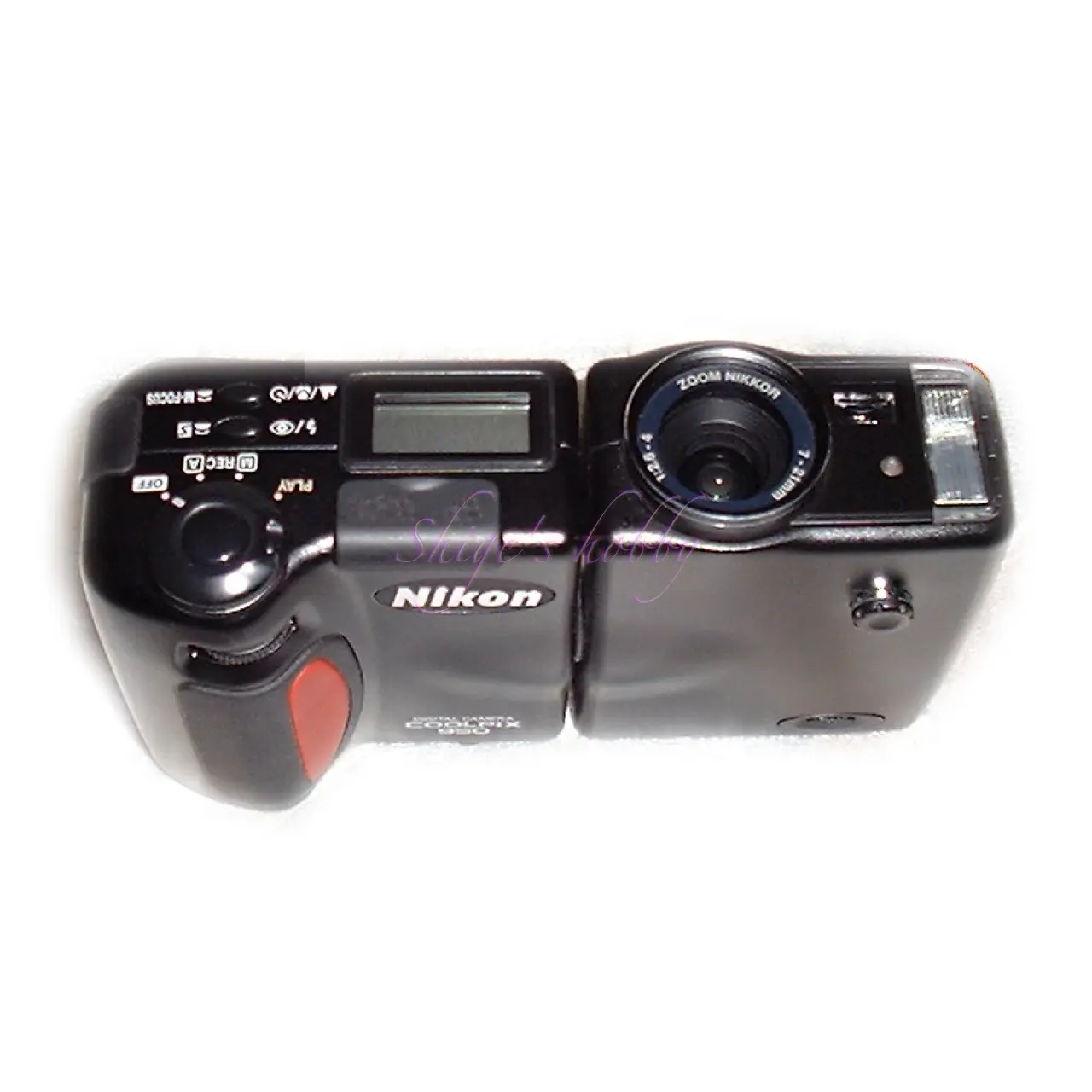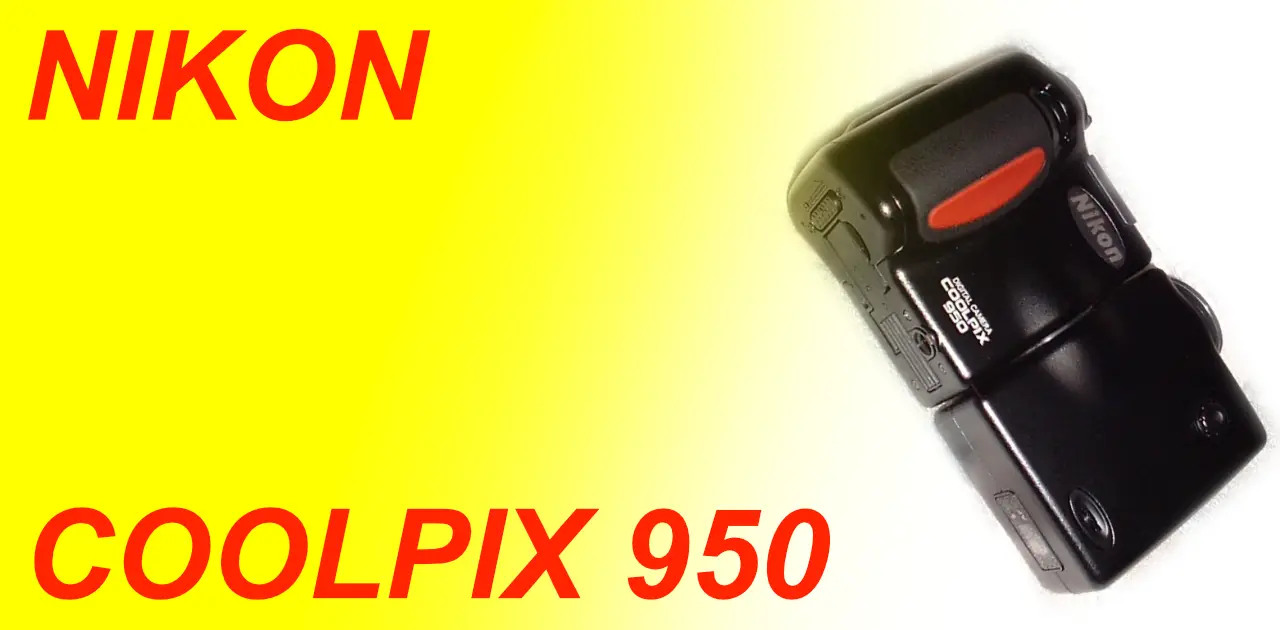Last updated on 2025-10-26
A review and sample photos of the Nikon Coolpix 950 digital camera.
- Please see the disclaimer regarding advertising here.
- Italicized links in the text are advertisement links that take you to other sites.
Table of contents

Gallery
Review


1.Overview
The NIKON COOLPIX 950 is a built-in lens digital camera manufactured by Nikon and released in 1999. It’s a fine old compact camera, having been released over 20 years ago.
The image sensor has 2 megapixels, a 4:3 aspect ratio, and a maximum resolution of 1600 x 1200. This is about the same resolution as high-resolution monitors in the Windows XP era.
Detailed specifications are listed in the table below.
2.Usability
These are photos taken with the NIKON COOLPIX 950, but 2 megapixels is clearly not enough resolution for 2024. Similarly, the Sony DSC-U20 and DSC-U30, both 2-megapixel compact cameras, have similar resolutions, but judging from the results, they also seem to be lacking. Even with an older compact camera, I think you can take reasonably satisfactory photos with 3 or even 5 megapixels. Of course, it’s up to the photographer to make the most of low resolution, so it’s up to the photographer to decide what they want to express and how.
As this is an older digital camera, the image quality is far below that of today’s smartphones. Even at ISO 80 in daylight, the default setting makes photos look a bit dull and blurry (though you can adjust the sharpness and improve the appearance in post-processing), and even at the maximum ISO 320 sensitivity, noise occurs and resolution drops.
With no image stabilization, camera shake has a significant impact at night. The autofocus speed is also quite slow, and in sudden situations it can’t keep up at all. For someone used to modern cameras, this is a pretty unbearable specification.
The Swivel Coolpix’s real-image optical viewfinder changes the shooting range in conjunction with the lens zoom, but all the photographer can see is the shooting range, not the focus position, the same system as AF compact cameras from the film camera era. The rear LCD screen uses live view, so you can check the shooting range and focus, but the monitor is only 1 inch in size and has a resolution of 100,000 dots, so it’s not very accurate.
The camera runs on four AA batteries, and can also run on relatively low-voltage nickel-metal hydride batteries such as Eneloop. It’s probably designed to run on a single battery at around 1.2V.
Start-up time is relatively slow, with a few seconds delay between powering it on and being able to start shooting, so you’ll have to wait a while.
The recording media is CompactFlash, the image storage format is JPEG, and there are three recording sizes: 1600×1200 (FULL), 1024×768 (XGA), and 640×480 (VGA). Four image quality settings are available: HI, FINE, NORMAL, and BASIC.
At 1600×1200 (FULL) resolution, HI is approximately 8MB, FINE is 1MB, NORMAL is 0.5MB, and BASIC is 0.25MB. HI is nearly uncompressed, and the compression rate increases accordingly. In the past, you could only buy small memory cards, so you would shoot in FINE or NORMAL.
The Coolpix 9xx series has a 28mm thread on the tip of the lens, allowing you to use both teleconverters and wide-angle converters. Nikon’s optional accessories are available in a fair number on the market, so they are relatively easy to find, even second-hand. Cameras like Olympus have different options for each model, which can be difficult to find even when you’re searching.
I no longer have this camera, but I purchased it on the day of release at a slight discount. The CP950 features the same red accent on the grip as Nikon SLR cameras, and combined with the black body, it really does follow the image of a Nikon camera.
3.Summary
In conclusion , to sum up, the NIKON COOLPIX 950 is a camera that shows Nikon getting serious about digital cameras ahead of the millennium, and while it didn’t quite match the performance of film cameras at the time, it still performed well enough for a digital camera at the time.
The red accent on the grip, which is the same as that found on the Nikon F SLR, is a symbol of this.
Specifications, considerations, etc.
Starting with the COOLPIX 900, Swival Nikon cameras date back to an era when improvements in digital camera performance were measured in pixel count, with pixel count increasing by one million pixels per year.
However, Nikon was in a state of flux in camera design during this period, and perhaps because they had an abundant budget, they indulged in the luxury of changing the body shape with each new model. Of the five cameras below, the COOLPIX 950’s black design with a single red accent is arguably the most Nikon-esque.
| Items | COOLPIX 900 | COOLPIX 950 | COOLPIX 990 | COOLPIX 995 | COOLPIX 4500 |
| Camera effective pixels | 1 million pixels | 2 million pixels | 3 million pixels | 3 million pixels | 4 million pixels |
| Focal length | 3x zoom Nikkor lens f=7 to 21mm (35 mm film equivalent: 38 to 115mm) F2.6 – F4 | ← | 3x zoom Nikkor lens f=8~24mm (35 mm film equivalent: 38 – 115 mm) F2.5 – F4 | f=8 to 32mm (35 mm film equivalent: 38-152 mm) F2.6 to F5.1 | 4x zoom Nikkor lens f=7.85 – 32mm (35mm film equivalent 38 – 155mm) F2.6 – 5.1 |
| Lens Construction | – | – | 9 elements in 8 groups | 10 elements in 8 groups | ← |
| Leaf blade | – | – | 7 | ← | ← |
| Image sensor | 1/2.7-inch CCD | 1/2-inch CCD(?) | 1/1.8-inch CCD | ← | ← |
| Max ISO | – | 320 | 400 | 800 | ← |
| Back LCD | 2-inch, ? pixels | 2-inch, 130,000 pixels | 1.8-inch, 110,000 pixels | ← | 1.5-inch, 110,000 pixels |
| View Finder | real image type | ← | ← | ← | ← |
| Battery | 4 AA Batteries 1.2V*4 | ← | ← | EN-EL1 | ← |
| Recorded Media | Compact flash | ← | ← | ← | ← |
| Size(mm) W x H x D | 157×75×35 | 143×76.5×36.5 | 149×79×38 | 138×82×40 | 130×73×50 |
| Weight(g) | 360(Only body) | 350 (Only body) | 390 (Only body) | 390(Only body) | 360(Only body) |
| Release date | 1998.4 | 1999.3 | 2000.4 | 2001.6 | 2002.6 |
| Price(Yen/No-tax) | 110,000 | 125,000 | 125,000 | 113,000 | OpenPrice (105,000) |
| Items | Fish-eye Converter: FC-E8 (0.2x) | Wide Converter: WC-E63 (0.63x) | Teleconverter: TC-2E (2x) | Teleconverter: TC-E3ED (3x) | Teleconverter: TC-E3PF (3x) |
| Lens Construction | 5 elements in 4 groups | 4 elements in 4 groups | 4 elements in 3 groups | 6 elements in 3 groups | 6 elements in 3 groups |
| converter magnification | 0.2倍 | 0.63倍 | 2倍 | 3倍 | 3倍 |
| composite aperture value | No change. | ← | ← | ← | ← |
| Size | ? | 75*29.5 | 64*44 | 75*78.6 | 61*64.3 |
| Mounting Diameter | 28mm | ← | ← | ← | ← |
| Filter Size | – | 72mm | 62mm | 72mm | 58mm |
| Weight | ? | 150g | 240g | 260g | 175g |
| Supported models | COOLPIX P5100 COOLPIX P5000 COOLPIX 8400 COOLPIX 5000 COOLPIX 4500 COOLPIX 4300 COOLPIX 995 COOLPIX 990 COOLPIX 950 COOLPIX 885 COOLPIX 880 | ← | ← | ← | COOLPIX 8400 (with adapter ring UR-E15) COOLPIX 5000 (COOLPIX 5000 (with UR-E6 adapter ring) COOLPIX 4500/4300 (COOLPIX 4500 /4300 (with UR-E4) COOLPIX 900 Series |
| Price(Yen/No-tax) | 45,000- | 14,000- | 14,000- | 29,000- | 80,000- |
| Note | – | Image quality is better without telecon after 35mm focal length | Vignetting occurs on the wide side. | ← | ← |
Options
- Fish-eye Converter: FC-E8 (0.2x)
- Wide Converter: WC-E63 (0.63x)
- Wide Converter: WC-E75 (0.75x)
- Teleconverter: TC-2E (2x)
- Teleconverter: TC-E3ED (3x)
- Teleconverter: TC-E3PF (3x)
- PC Connection Kit
Reference links
- Nikkor One Thousand and One Nights – Night 24: Converter Lens for COOLPIX 4300
- Slightly View Low Magnification Binoculars
Affiliate links

Amazon Prime Sale
Update history
- 2025.8.18
- 2024.07.21


Be First to Comment